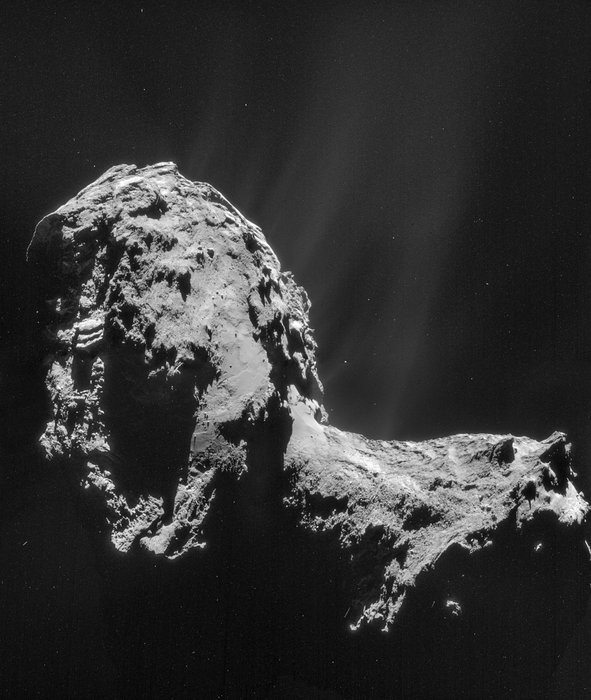
Comets? Asteroids? Or what?
One of the most basic questions driving Astronomy and Space Exploration is: Where did the water for Earth’s oceans come from?
The answer to the question of the origin of Earth’s water has the most fundamental implications for the formation of Earth and the origin of life on Earth, and is one of the top science goals of NASA’s and ESA’s planetary science exploration programs.
Newly reported observations from Europe’s Rosetta orbiter investigating comet 67P/Churyumov-Gerasimenko have sparked an intensified debate on the origin of water and ultimately the “origin of us”—and that is all to the good!
Rosetta is history’s first mission from Earth to orbit a comet.
Measurements from the probes ROSINA (Rosetta Orbiter Spectrometer for Ion and Neutral Analysis) instrument found that the isotopic composition of water vapor from comet 67P is significantly different compared to that found in Earth’s oceans.
Most scientists believe that a significant portion—but not all—of Earth’s water was delivered by swarms of powerful cosmic collisions with small bodies like comets and asteroids bombarding our planet soon after its formation some 4.6 billion years ago.
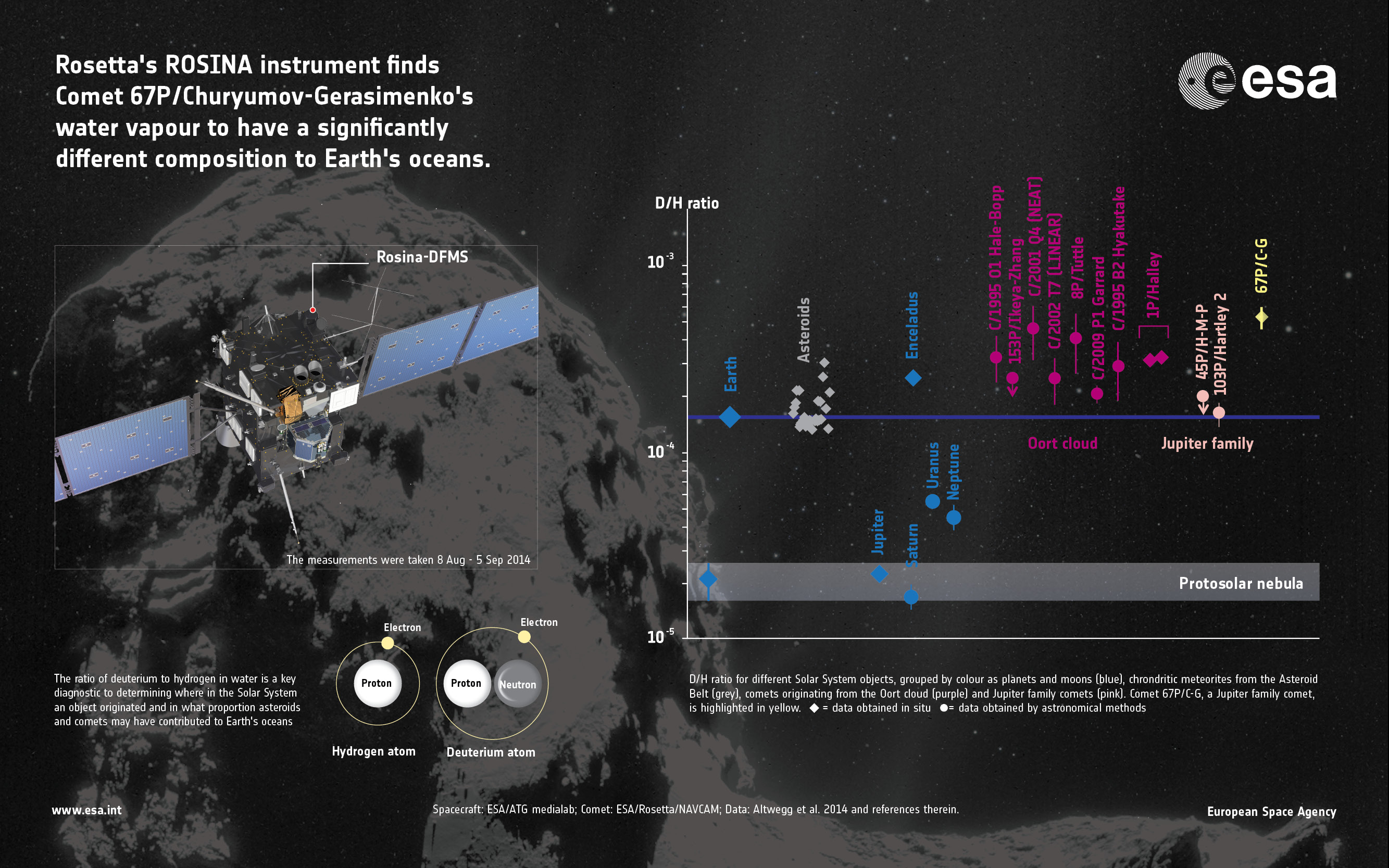
During its formation, Earth was a hellish cauldron of endless volcanic eruptions and far too hot to sustain any significant liquid water.
But the planet gradually cooled below water’s boiling point so that the life-giving fluid could accumulate over time. And Earth today is a beautiful water world with two-thirds of the surface covered with the liquid that sustains all life here.
So where did the water come from?
There are three possibilities regarding Terran collisions with asteroids and comets: asteroid-like small bodies from the region of Jupiter; Oort cloud comets formed inside of Neptune’s orbit; and Kuiper Belt comets formed outside of Neptune’s orbit.
Comets vs. Asteroids? And how much water from each type of small body?
Those are the questions Rosetta seeks to illuminate at comet 67P, put in the context with knowledge collected from other Earth- and space-based telescopes and robotic spacecraft explorers.
In a nutshell, the isotopic data from the ROSINA instrument indicate that terrestrial water did not come from comets like 67P, which currently orbits roughly between the orbits of Earth and Jupiter as a Jupiter family comet, but originally hails from the much more distant Kuiper belt region beyond Neptune.
The data measuring the ratio of deuterium to hydrogen (D/H) isotopes were gathered starting shortly after the orbiter arrived on Aug. 6, 2014, after a decade-long interplanetary chase, and cover about a month of up-close observations.
As ESA put it, “the key to determining where the water originated is in its ‘flavour’, in this case the proportion of deuterium – a form of hydrogen with an additional neutron – to normal hydrogen.”
Deuterium is a heavier isotopic form of hydrogen with one extra neutron.
The initial set of over D/H measurements were made using ROSINA’s DFMS double focusing mass spectrometer between 8 August and 5 September 2014, and have just been published in the journal Science on 10 December. Further D/H data collection is an ongoing goal of the mission.
Scientists have measured the ratio of deuterium to hydrogen in many different types of solar system objects, including planets, asteroids, and comets.
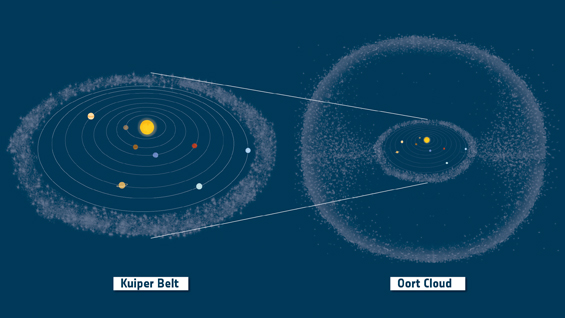
Armed with this growing wealth of data, they can identify where in the solar system that object originated. The D/H ratio can also serve as a signature identifying the various stages of a planets evolution and history.
Researchers hope to identify the origin(s) of our water by comparing Earth’s D/H ratio to other solar system bodies. See the detailed image herein for a comparison of D/H ratios.
The first in situ D/H measurements of a comet were made in 1986 by ESA’s Giotto probe during a flyby of Halley’s comet, and it turned out to be twice the terrestrial value.
Since then a wide range of D/H ratios have been measured on 11 comets. Only one, the Jupiter-family Comet 103P/Hartley 2, was found to match the composition in Earth’s water, in observations made by ESA’s Herschel mission in 2011.
Conversely, D/H measurements from meteorites originating from the main Asteroid Belt are a much closer match to Earth’s oceans.
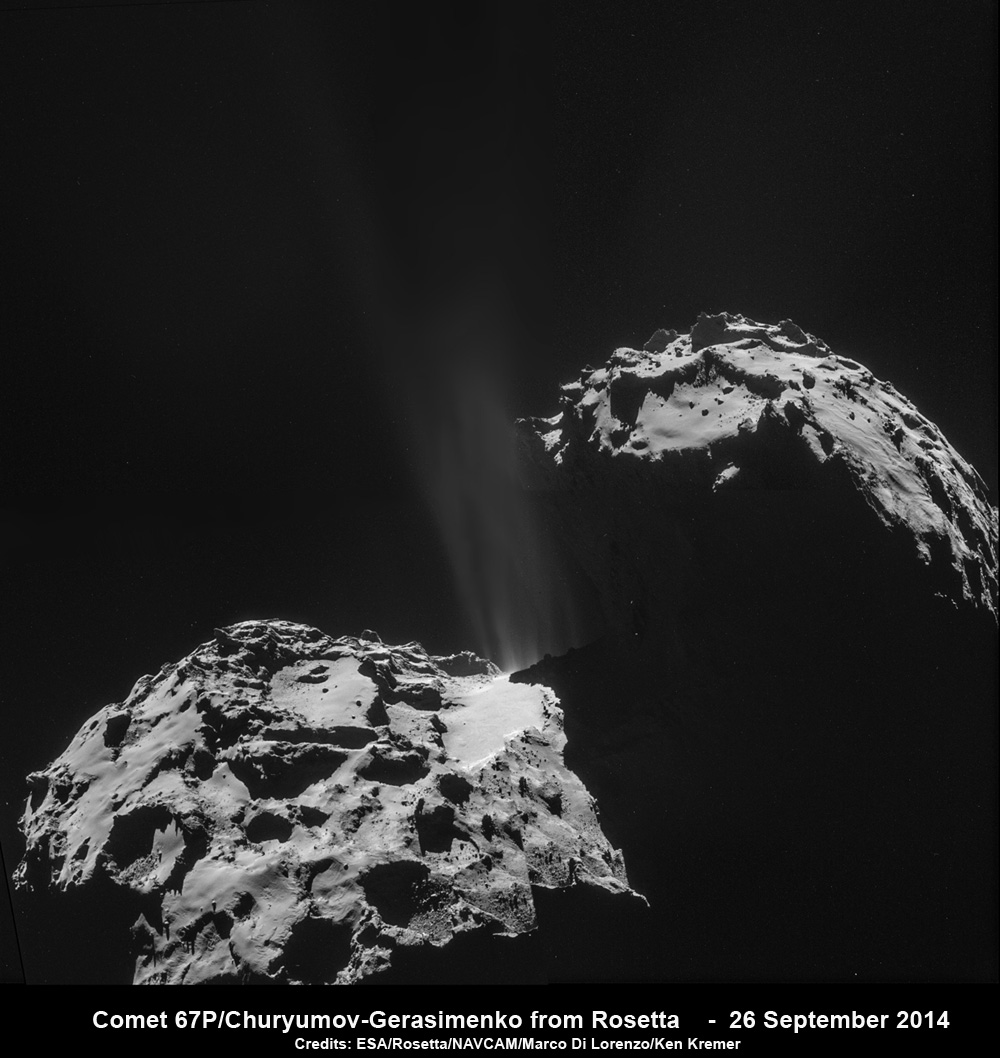
Therefore, even though asteroids are composed of much less water than comets, they apparently contributed a far greater share of Earth’s ocean water overall, presumably due to a far greater number of shattering impacts on the early Earth, over millions to perhaps hundreds of millions of years.
ROSINA’s water vapor measurements yielded a value for the D/H value that is more than three times the Earth’s ocean value.
This makes it among the highest-ever-measured D/H values in the Solar System. Therefore, one can conclude that comets like 67P/Churyumov-Gerasimenko are not the origin of most terrestrial water.
“We knew that Rosetta’s in situ analysis of this comet was always going to throw us surprises,” said Matt Taylor, Rosetta’s project scientist from the European Space Research and Technology Center, Noordwijk, the Netherlands.
“The bigger picture of solar-system science, and this outstanding observation, certainly fuel the debate as to where Earth got its water.”
Scientists are studying comets because they are like time capsules reflecting the primordial composition of their places of origin and may well have played a key role in the origin of life on Earth.
Comets are the pristine leftover remnants from the formation of our Solar System some 4.6 billion years ago and harbor material left over from the protoplanetary disc out from which the planets formed.
Therefore, comets could hold clues to the origin of life on Earth since they brought significant quantities of water and organic molecules to the early Earth as it was evolving.
Indeed the COSAC instrument on Rosetta’s companion Philae lander probe already discovered organic molecules from the comet’s surface.
But the picture is further complicated by the fact that asteroids also brought ancient water and the fact that the Solar System was not a static place, rather a jumbled mess of collisions and displacements of objects from all about the then-ever changing Solar System.
The newly published D/H findings from Rosetta mission “make it more likely that Earth got its water from asteroid-like bodies closer to our orbit and/or that Earth could actually preserve at least some of its original water in minerals and at the poles,” according to an ESA statement.
“Our finding also rules out the idea that Jupiter-family comets contain solely Earth ocean-like water,” says Kathrin Altwegg, principal investigator for ROSINA and lead author of the paper reporting the results in the journal Science this week.
“It supports and adds weight to models that include asteroids as the main delivery mechanism for Earth’s oceans.”
“This surprising finding could indicate a diverse origin for the Jupiter-family comets – perhaps they formed over a wider range of distances in the young Solar System than we previously thought,” noted Altwegg.
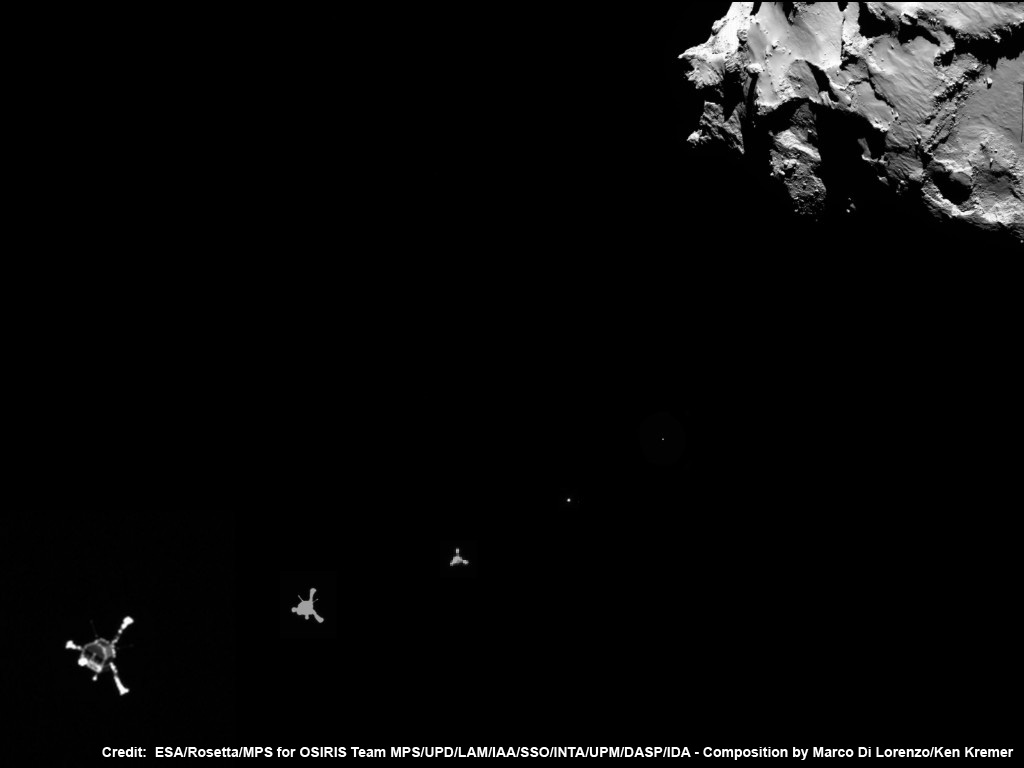
Rosetta’s history-making mission will continue for at least another year. As it escorts comet 67P around the Sun it will be the first spacecraft to witness up close the momentous changes the comet undergoes as increasing solar radiation impinges on the surface and activity increases as material erupts from the nucleus surface and interior into an ever-expanding coma of gas and dust particles.
“As Rosetta continues to follow the comet on its orbit around the Sun throughout next year, we’ll be keeping a close watch on how it evolves and behaves, which will give us unique insight into the mysterious world of comets and their contribution to our understanding of the evolution of the Solar System,” notes Taylor.
Meanwhile, the team hopes the Philae comet lander will reawaken from hibernation as the bizarre two-lobed comet approaches perihelion in August 2015 and transmits additional breathtaking data and imagery.
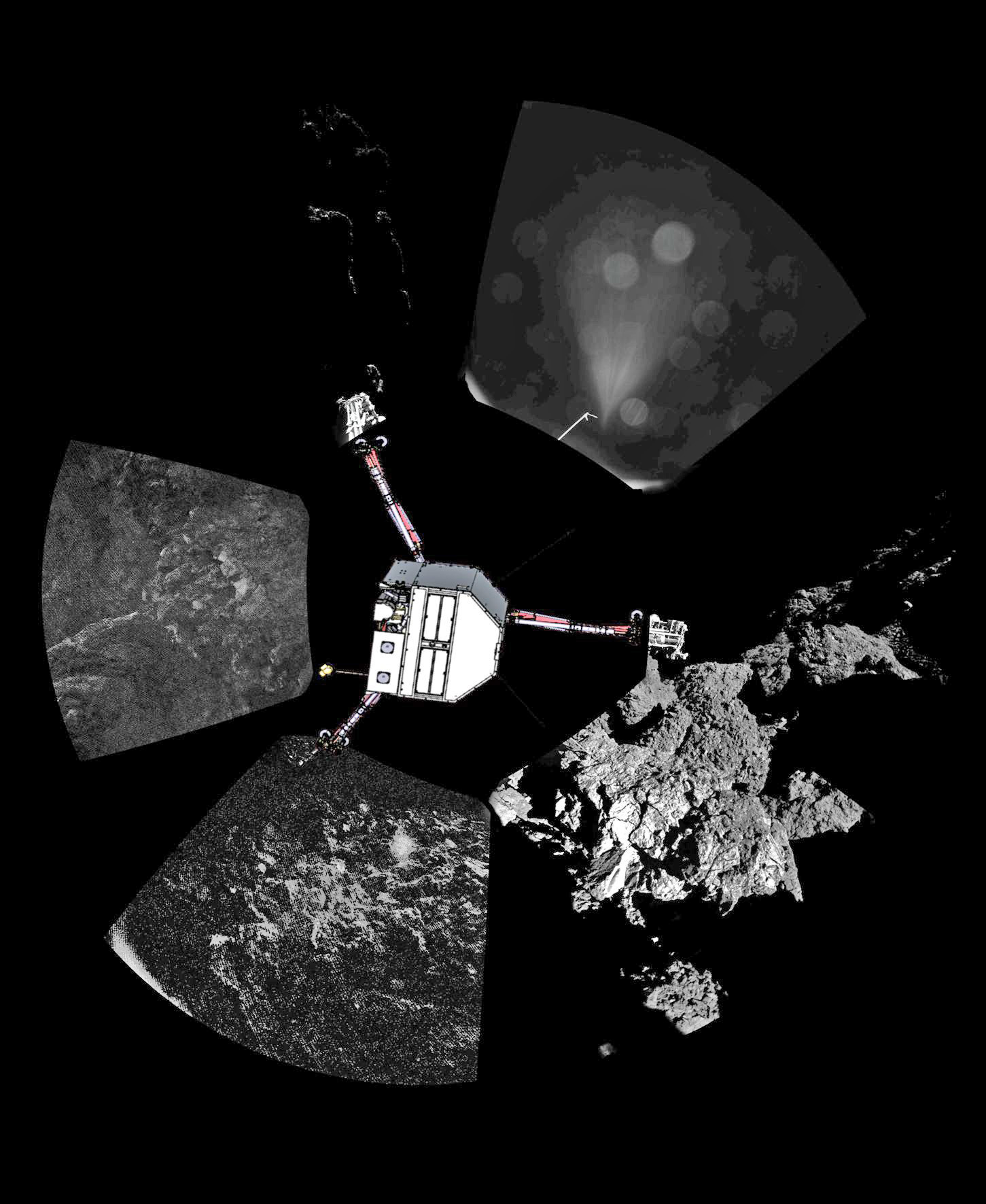
Stay tuned here for continuing developments.
Want to keep up-to-date with all things space? Be sure to “Like” AmericaSpace on Facebook and follow us on Twitter: @AmericaSpace
Missions » Rosetta »


